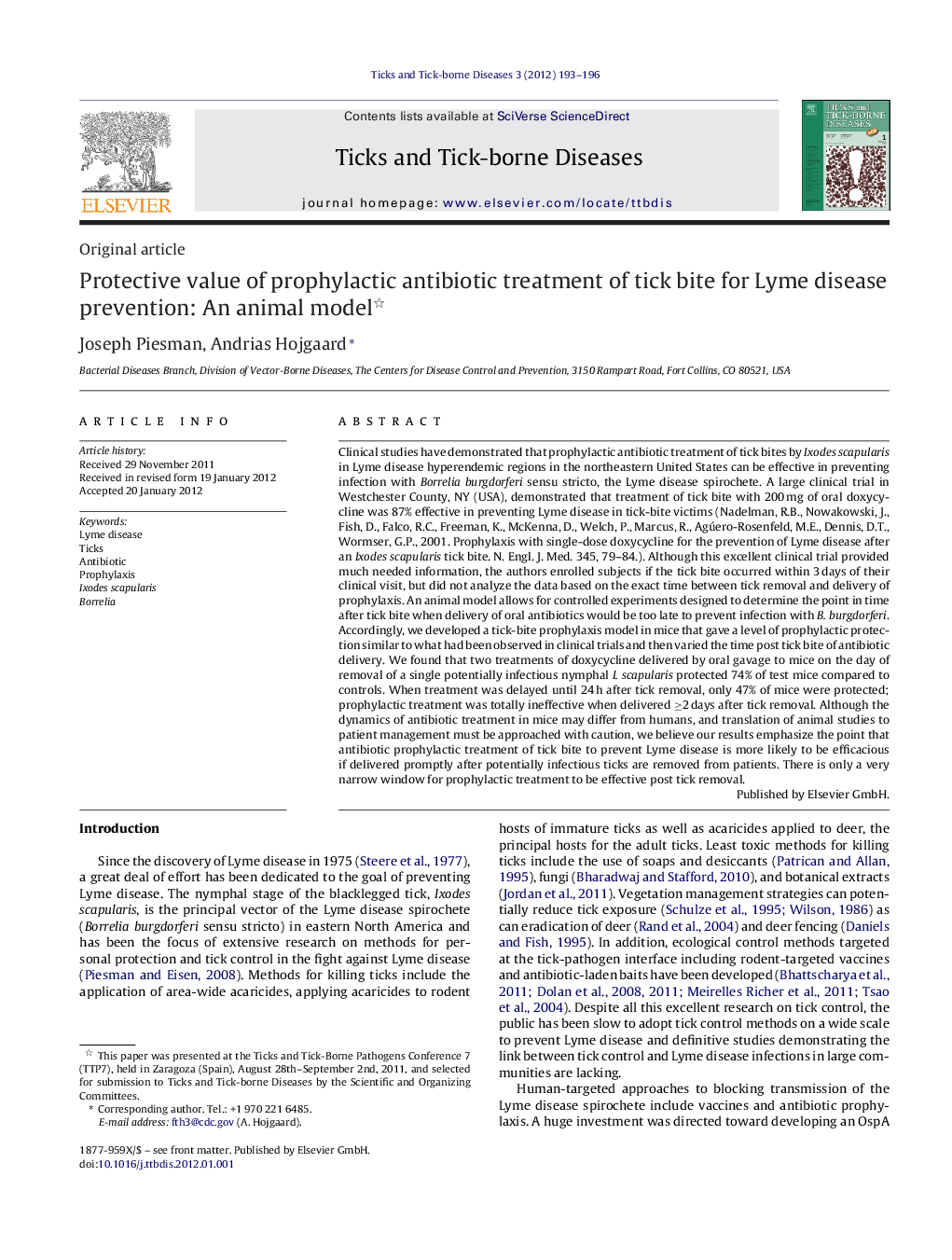| کد مقاله | کد نشریه | سال انتشار | مقاله انگلیسی | نسخه تمام متن |
|---|---|---|---|---|
| 5807294 | 1113120 | 2012 | 4 صفحه PDF | دانلود رایگان |

Clinical studies have demonstrated that prophylactic antibiotic treatment of tick bites by Ixodes scapularis in Lyme disease hyperendemic regions in the northeastern United States can be effective in preventing infection with Borrelia burgdorferi sensu stricto, the Lyme disease spirochete. A large clinical trial in Westchester County, NY (USA), demonstrated that treatment of tick bite with 200 mg of oral doxycycline was 87% effective in preventing Lyme disease in tick-bite victims (Nadelman, R.B., Nowakowski, J., Fish, D., Falco, R.C., Freeman, K., McKenna, D., Welch, P., Marcus, R., Agúero-Rosenfeld, M.E., Dennis, D.T., Wormser, G.P., 2001. Prophylaxis with single-dose doxycycline for the prevention of Lyme disease after an Ixodes scapularis tick bite. N. Engl. J. Med. 345, 79-84.). Although this excellent clinical trial provided much needed information, the authors enrolled subjects if the tick bite occurred within 3 days of their clinical visit, but did not analyze the data based on the exact time between tick removal and delivery of prophylaxis. An animal model allows for controlled experiments designed to determine the point in time after tick bite when delivery of oral antibiotics would be too late to prevent infection with B. burgdorferi. Accordingly, we developed a tick-bite prophylaxis model in mice that gave a level of prophylactic protection similar to what had been observed in clinical trials and then varied the time post tick bite of antibiotic delivery. We found that two treatments of doxycycline delivered by oral gavage to mice on the day of removal of a single potentially infectious nymphal I. scapularis protected 74% of test mice compared to controls. When treatment was delayed until 24 h after tick removal, only 47% of mice were protected; prophylactic treatment was totally ineffective when delivered â¥2 days after tick removal. Although the dynamics of antibiotic treatment in mice may differ from humans, and translation of animal studies to patient management must be approached with caution, we believe our results emphasize the point that antibiotic prophylactic treatment of tick bite to prevent Lyme disease is more likely to be efficacious if delivered promptly after potentially infectious ticks are removed from patients. There is only a very narrow window for prophylactic treatment to be effective post tick removal.
Journal: Ticks and Tick-borne Diseases - Volume 3, Issue 3, June 2012, Pages 193-196